
The National Solar Observatory is located in Sunspot, NM, on Sacramento Peak above Alamagordo, New Mexico, not far from Apache Point observatory. Both of these observatories are at about 10,000 feet above sea level and overlook the basin that includes the White Sands Missile Range and White Sands National Monument. The NSO is a publicly funded facility, so you can tour the insides of many buildings and they have a gift shop!. Route 6563 takes you there. This number comes from one of the wavelengths (in angstroms) of ionized hydrogen that is used to view the sun. Because these scopes only look at the sun, which is obviously very bright, the scope diameters are not very large and have very long focal lengths for high magnification. Plus because the sun is only ever in a relative restricted portion of the sky throughout the year, the telescope and dome designs do not have to be able to look at any point in the sky like astronomical telescopes do.

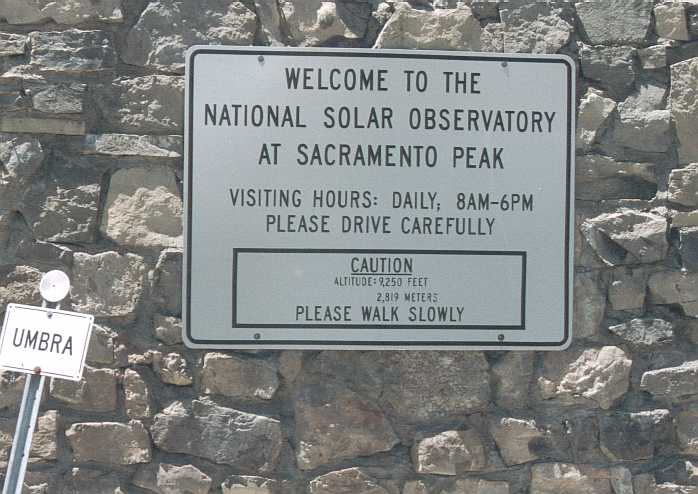
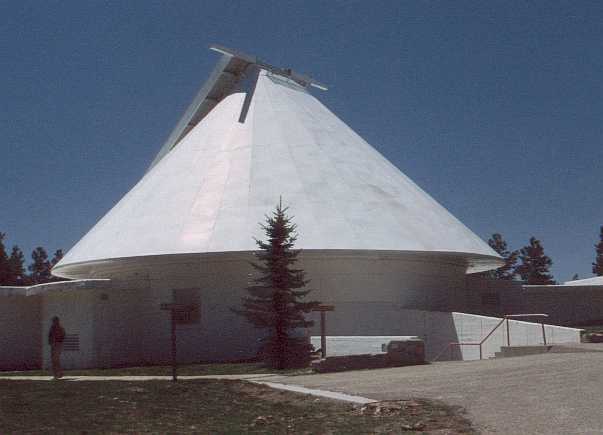
This is the cool dome for the John W. Evans Solar Facility which consists of two main telescopes: a 16" hydrogen-alpha coronograph (6365 angstroms), and a 12" coelostat telescope. Because they only ever look at one object, they are simply placed side-by-side on a single mount as shown below and study solar flares, eruptive prominences, and surges.
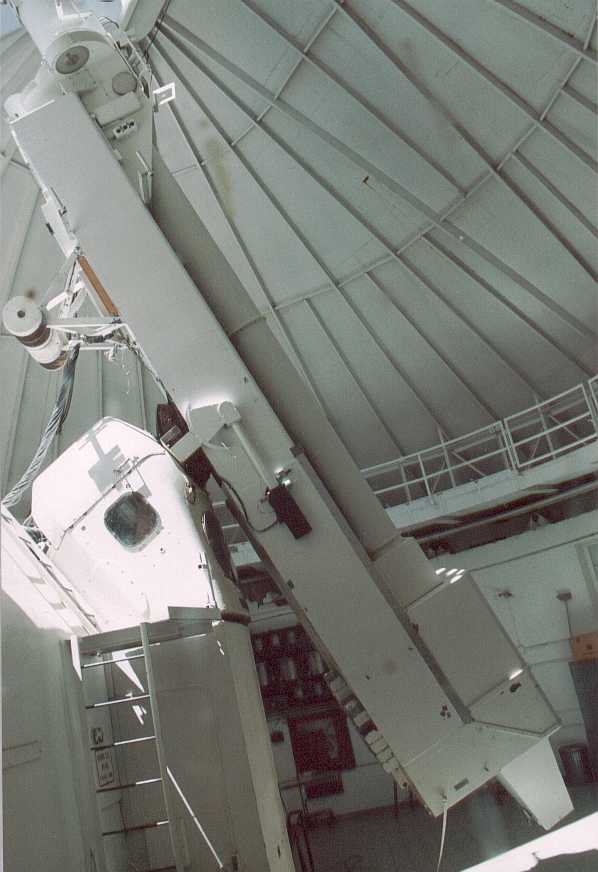
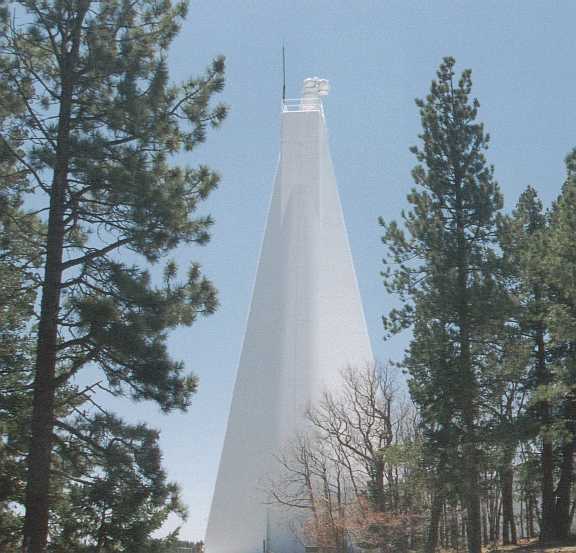
Above and below are two shots of the Richard B. Dunn Solar Telescope, a unique instrument that specializes in solar high resolution imaging and spectroscopy. It packages a very long focal length telescope (hey, it's the sun we're looking at, no need for large diameter photon-gathering here!) into a very compact and stable structure. The 136-foot-tall upper part holds a mirror turret that follows the sun around, above the trees and ground heat distortion. The mirror reflects the sun down to the 1.6-meter primary objective, which is 220 feet underground and faces upward and sends the image back up to ground level, where the instruments are located on a floor that rotates with the telescope. The whole 250-ton scope and observing deck floats on mercury so it can be easily moved by hand. The walls are thick concrete to keep the whole thing cool, which it is inside in more than one way! The scope produces a 20-inch-wide visible light image of the sun.
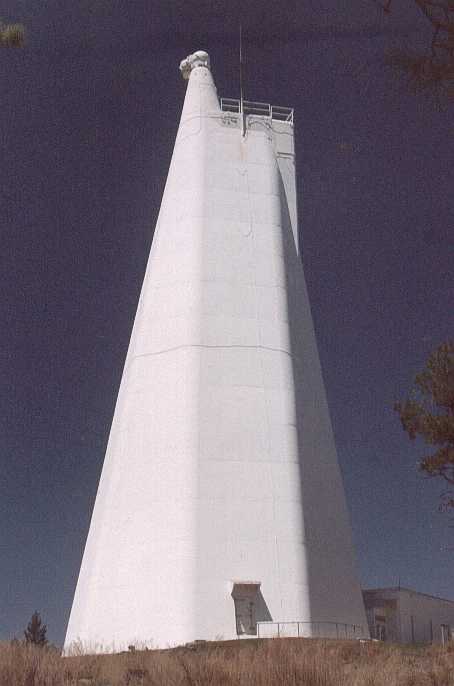
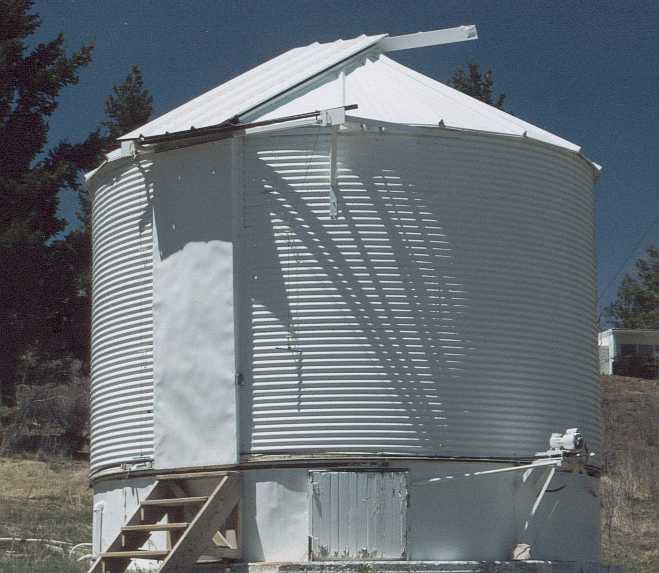
If this building looks like a grain bin, it is! In contrast to the high-tech Dunn scope, this is the first, low budget observatory bought from the Sears catalog and installed in the 1950s. Now it is just used for recreational observing by the employees.